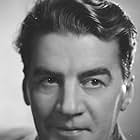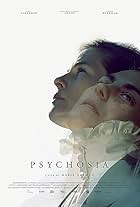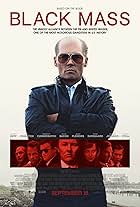Photos
Heidi Blåfield
- Hanna, Iisakin tytär
- (as Heidi Korhonen)
Einar Rinne
- Juhani, Heikin poika
- (as Einari Rinne)
Karl Fager
- Tukkilainen
- (as Carl Fager)
- Director
- Writers
- All cast & crew
- Production, box office & more at IMDbPro
Storyline
Did you know
- ConnectionsFeatured in Suomi-Filmin tarina: Ehdottomasti suomalaisia elokuvia 1920-1935 (1993)
Featured review
Herr Erkki Karu is considered one of the most important silent pioneers and a key figure in the Finnish silent film history; he founded "Suomi-Filmi," the most important Finnish film production company until the mid 20's of the last century and was the director of two successful and famous silent films for that cold country, "Koskenlaskijan Morsian" ( The Logroller's Bride ) (1923) and "Nummisuutarit" ( The Village Shoemakers ) (1923), the latter coming soon to the Schloss theatre!.
"Koskenlaskijan Morsian" besides being a successful film in Herr Karu's country, was the first Finnish silent film that had a widespread international circulation outside such freezing borders and certainly the film deserved such interest inside or outside Finland as this Herr Von is going to explain right now.
The film is set in the small village of Nuottaniemi wherein lives Herr Iisakki and his daughter Hanna. Herr Iisakki has grudge against Herr Heikki, blaming him for the death of his son in a raft accident. To make things worse Herr Heikki's son, Herr Juhani, wants to marry Frau Hanna but she only has eyes for a lumberman named Herr Anti Koskenalustan
The film depicts the daily and close life in Nuottaniemi, a small place where everyone depends on the river and in the countryside where elderly, hard-working and pious people live under the heavy influence of the preacher. Many of the latter scenes are filmed indoors in a theatrical way and with a static camera. Still, the oppressive atmosphere of jealousy, suspicion, old feuds and resentment are very well captured by Herr Karu. These sequences have nothing in common with the outdoor scenes, especially the ones set in the river rapids where there are some dazzling and shocking moments, brilliantly achieved (especially considering the technical resources of the time) with Herr Karu using many camera angles. The rough daily hard work of the men in the rafts is shown with invigorating imagery and the scene of the rescue of a raft caught in the rapids is thrilling and shocks modernen audiences.
There are some minor flaws such as occasional overacting (though not by the charming Frau Heid Blafiled as Hanna or Herr Konrad Tallroth as her father) but these don't override the many merits of what is an excellent example of the virtuosity that can be found in many early Nordic films.
And now, if you'll allow me, I must temporarily take my leave because this German Count must go down to the troublesome Teutonic river waters.
Herr Graf Ferdinand Von Galitzien http://ferdinandvongalitzien.blogspot.com
"Koskenlaskijan Morsian" besides being a successful film in Herr Karu's country, was the first Finnish silent film that had a widespread international circulation outside such freezing borders and certainly the film deserved such interest inside or outside Finland as this Herr Von is going to explain right now.
The film is set in the small village of Nuottaniemi wherein lives Herr Iisakki and his daughter Hanna. Herr Iisakki has grudge against Herr Heikki, blaming him for the death of his son in a raft accident. To make things worse Herr Heikki's son, Herr Juhani, wants to marry Frau Hanna but she only has eyes for a lumberman named Herr Anti Koskenalustan
The film depicts the daily and close life in Nuottaniemi, a small place where everyone depends on the river and in the countryside where elderly, hard-working and pious people live under the heavy influence of the preacher. Many of the latter scenes are filmed indoors in a theatrical way and with a static camera. Still, the oppressive atmosphere of jealousy, suspicion, old feuds and resentment are very well captured by Herr Karu. These sequences have nothing in common with the outdoor scenes, especially the ones set in the river rapids where there are some dazzling and shocking moments, brilliantly achieved (especially considering the technical resources of the time) with Herr Karu using many camera angles. The rough daily hard work of the men in the rafts is shown with invigorating imagery and the scene of the rescue of a raft caught in the rapids is thrilling and shocks modernen audiences.
There are some minor flaws such as occasional overacting (though not by the charming Frau Heid Blafiled as Hanna or Herr Konrad Tallroth as her father) but these don't override the many merits of what is an excellent example of the virtuosity that can be found in many early Nordic films.
And now, if you'll allow me, I must temporarily take my leave because this German Count must go down to the troublesome Teutonic river waters.
Herr Graf Ferdinand Von Galitzien http://ferdinandvongalitzien.blogspot.com
- FerdinandVonGalitzien
- Jun 2, 2011
- Permalink
Details
- Release date
- Country of origin
- Language
- Also known as
- La novia del girador de troncos
- Filming locations
- Vironkatu 9, Helsinki, Finland(Studio)
- Production company
- See more company credits at IMDbPro
Box office
- Budget
- FIM 299,270 (estimated)
- Runtime1 hour 27 minutes
- Color
- Sound mix
- Aspect ratio
- 1.33 : 1
Contribute to this page
Suggest an edit or add missing content
















